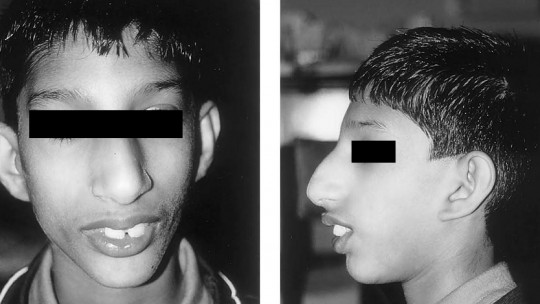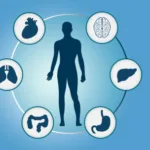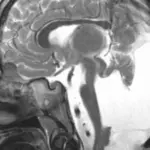Trisomy 18 is better known as Edwards syndrome. in honor of the geneticist who described the clinical picture, John Edwards. It is a very serious congenital disease that causes alterations throughout the body and usually causes death before the baby reaches the first year of life.
In this article we will see what they are the causes and symptoms of this disease and what are the three subtypes of Edwards syndrome, which differ in the way the trisomy occurs.
What is Edwards syndrome?
Edwards syndrome is a disease caused by genetic defects ; Specifically, it occurs as a consequence of a trisomy, or duplication, of chromosome 18. This is why it is also known as “trisomy 18.”
This alteration causes the baby’s body to not develop properly, so that multiple physical defects occur and the risk of premature death : Only 7.5% of diagnosed babies live more than a year.
It is a very common disease that affects 1 in every 5,000 newborns, most of them female. In fact, it is the most common trisomy after Down syndrome, in which chromosome 21 is duplicated.
Taking into account that a large number of spontaneous abortions They occur as a result of this alteration, especially in the second and third trimesters, the prevalence increases if we refer to the fetal period instead of the perinatal period.
Symptoms and signs
There are multiple symptoms and signs that denote the presence of Edwards syndrome, although not all of them occur simultaneously. Below we will describe the most common:
Causes of Edwards syndrome
The probability of having a baby with trisomy 18 increases with age, being more common around the age of 40. Mothers who have already had a daughter or son with this disease have about a 1% chance that the disorder will recur in subsequent pregnancies.
Edwards syndrome It is caused by a trisomy of the 18th chromosome. This means that affected babies have three copies of this chromosome, when it is normal to have two pairs of each of the 23. However, trisomy is not always complete, as we will see later.
Trisomy usually occurs due to chromosome duplication in the egg or sperm ; When the two reproductive cells join to form the zygote, it develops by dividing successively, and the genetic defect is repeated in each division. On other occasions, trisomy occurs during the early development of the fetus.
Although the most common cause of Edwards syndrome is duplication of chromosome 18, this disease can also be due to other genetic errors, such as translocation. These differences give rise to the different types of trisomy 18.
Types of trisomy 18
There are three types of Edwards syndrome based on the characteristics of trisomy 18. The severity of the baby’s symptoms may vary depending on the type of trisomy.
1. Complete or classic trisomy
This is the most common form of Edwards syndrome. In classic trisomy, all cells in the body have three complete copies of chromosome 18.
Since the involvement is widespread, in cases of complete trisomy symptoms are usually more severe than in the other types of Edwards syndrome.
2. Partial trisomy
Partial trisomy 18 is a rare type of Edwards syndrome caused by incomplete chromosome duplication. In general, these cases are due to a translocation, that is, the breakage of chromosome 18 and the union of the separated part to a different chromosome.
The severity and specific symptoms of each case of partial trisomy vary greatly because the duplications can affect different segments of the chromosome, but the alterations are usually less severe than the classic syndrome.
3. Mosaic trisomy
This type of trisomy occurs when the extra chromosome 18 is not found in all cells in the baby’s body but in some there are 2 copies and in others 3.
People affected by mosaic trisomy may have severe or mild symptoms, or may not have any physical changes; However, the risk of premature death remains very high.
Prognosis and treatment
Currently, Edwards syndrome is usually detected before birth through amniocentesis, a test that consists of analyzing the amniotic fluid (which protects the baby and allows it to obtain nutrients) in order to determine possible chromosomal alterations and fetal infections, as well as the sex of the baby.
Less than 10% of fetuses with trisomy 18 are born alive. Of these, 90% die during the first year of life half of them during the first week. The average life expectancy for babies with Edwards syndrome is between 5 days and 2 weeks. Death usually occurs due to cardiac and respiratory disorders.
Edwards syndrome There is no cure, so treatment aims to increase quality of life. of the affected person to the extent possible. Less severe cases of trisomy 18 do not always lead to death in childhood, but they do usually cause significant health problems and few patients live more than 20 or 30 years.









